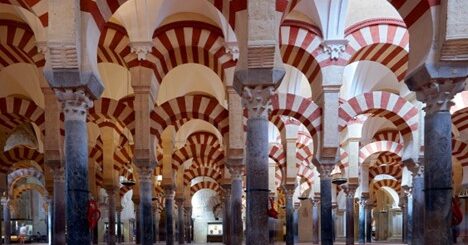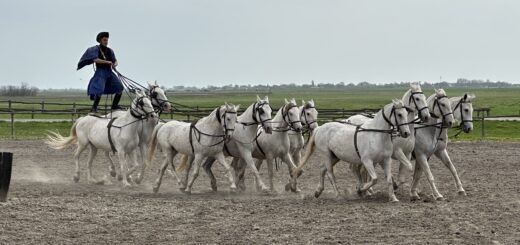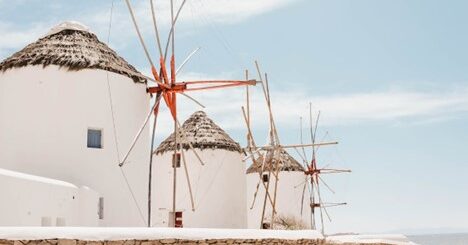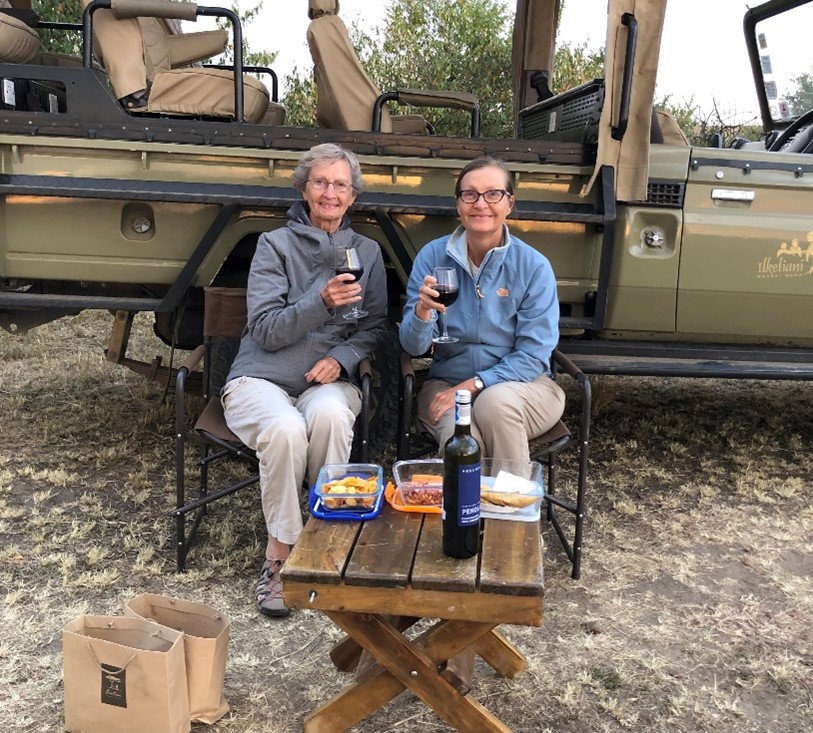Vienna
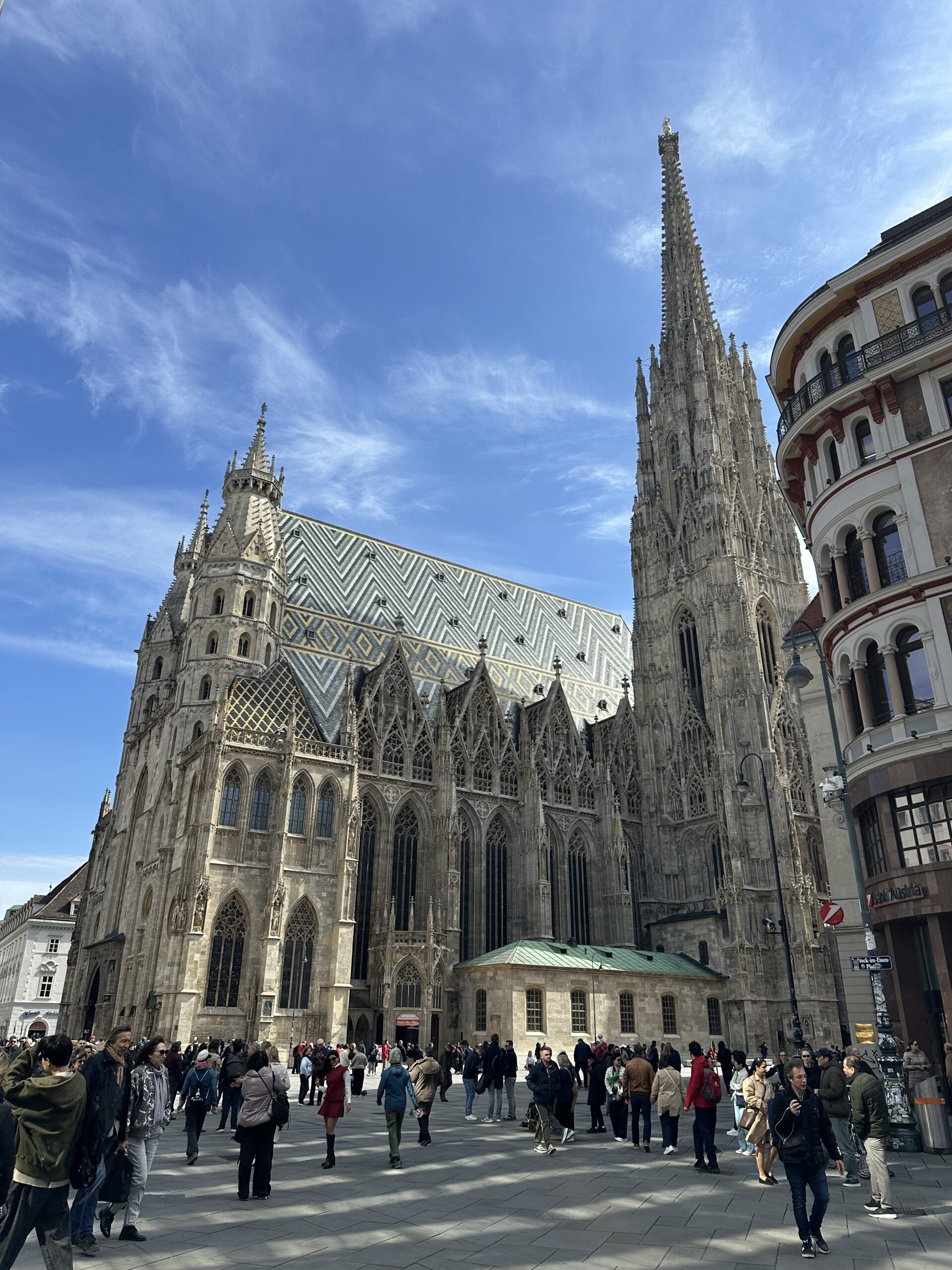
Travel Advice for Seniors: Vienna
Guten Abend! Welcome to the incredible city of Vienna, known as the “City of Music” for its rich classical music heritage. Composers such as Mozart, Beethoven, and Strauss thrived here during their era and music is a huge part of the culture here…witness the architectural treasure that is the world-renowned Wiener Staatsoper (Vienna State Opera).
The capital of the mountainous country of Austria, Vienna is located on the eastern side along the Danube River. The economic, cultural and political center of the country is home to about two million people.
The history of Vienna and indeed Austria itself, spans from Roman origins to its role as the capital of the Austro-Hungarian Empire that featured prominently in Europe for over 400 years. Once the heart of the Habsburg empire that ruled Austria….the classic Schonbrunn Palace and the Hofburg royal residences remain behind to remind us of the glory and power of the era.
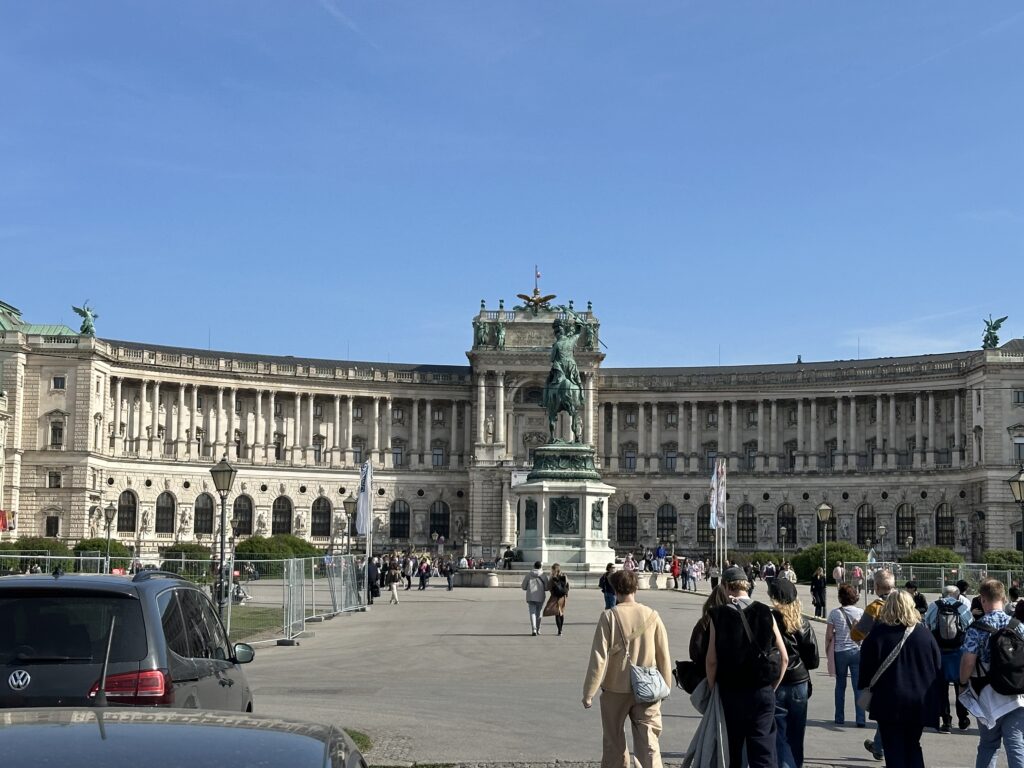
Not only is the music and arts scene fantastic, you can’t visit Vienna without taking in a coffee and a pastry at one of the many coffeehouses. The Viennese coffeehouse culture here is a UNESCO intangible cultural heritage and you don’t want to miss the chance to experience it.
Pastries and cakes are an artform in Vienna and even if you don’t like sweeties it is worthwhile just to take a look at the cases and cases of delicacies. The world-famous Sachertorte was created here at the Sacher Hotel back in 1832 for the Austrian court. The decadent chocolate cake with apricot jam filling and chocolate ganache is definitely worth a stop, especially when paired with a classic Viennese coffee, a strong espresso topped with whipped cream.
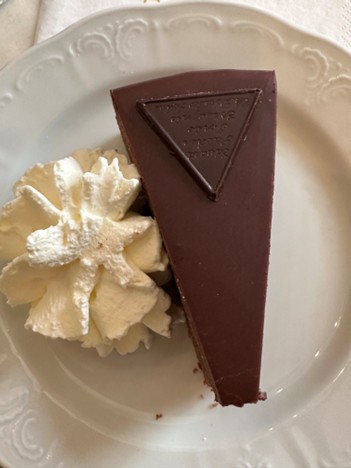
Every tour should start in the historic center of Vienna which is a UNESCO Heritage site. The St. Stephen’s Dom or basilica is one of the most spectacular Gothic architectural treasures in the city and is also symbol of the city. Its rich history began earnestly in the 1300’s and it is the seat of the Archdiocese of Vienna yet today.
A lot of the main sights in Vienna are conveniently clustered around the historic center, making the city very walkable. We took the pre-extension of our river cruise, spending a lovely three days in Vienna before setting sail.
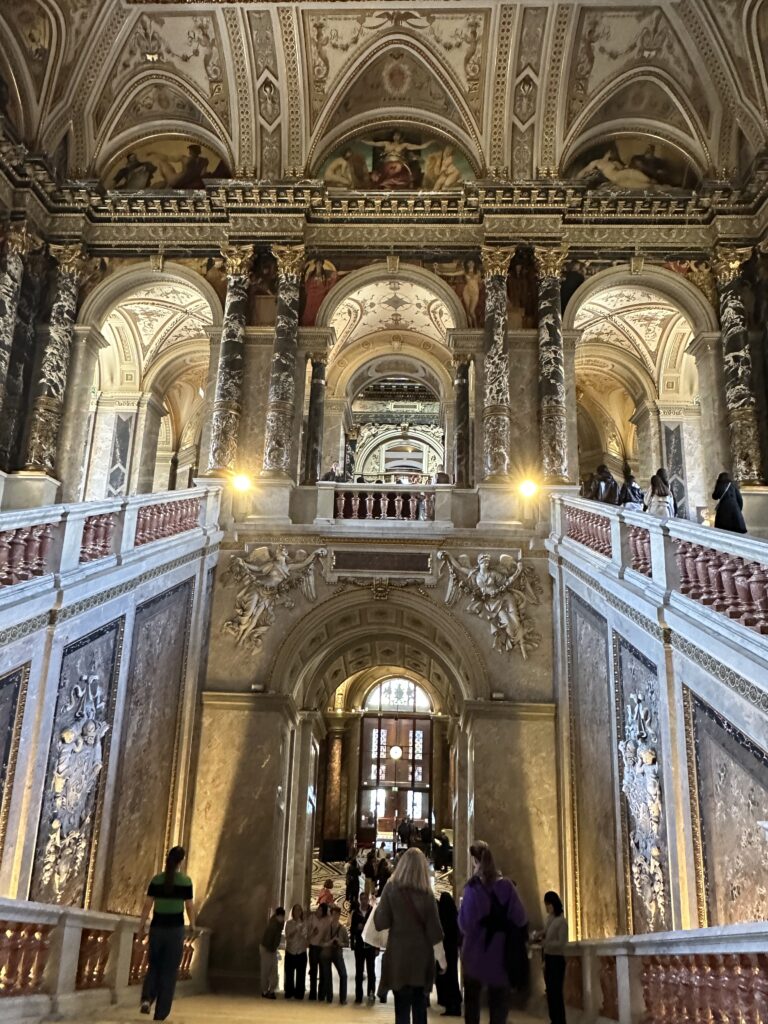
Our first stop was the Kunsthistoriches Museum, or Art History Museum. The museum is one of the best in Europe and covers Ancient Egypt to the late eighteenth century. Works by great masters from Dürer to Raphael, Titan and Tintoretto, Rubens and Velázquez, to Rembrandt and Vermeer compete for your attention. Plan to spend at least three hours. The museum features the world’s largest collection of works by Pieter Bruegel the Elder, Correggio’s Jupiter and Io, Vermeer’s Woman Holding a Balance, Rembrandt Self-Portrait and Portrait of the Infanta Margarita by Velaquez to name a few. The Museum has accessible entrance, ramps, elevators and restrooms, plus special tours for the disabled and tactile tours for the vision impaired.
After a wonderful morning and early afternoon at the Museum, we needed a refresher in the form of a sweetie and Viennese coffee at Demel. Established in 1786, it’s more than just a coffeehouse, it’s a cultural icon that has served royalty for years. Its very elegant interiors are the perfect place for a taste of its world-famous pastries, particularly, the Sachertorte.
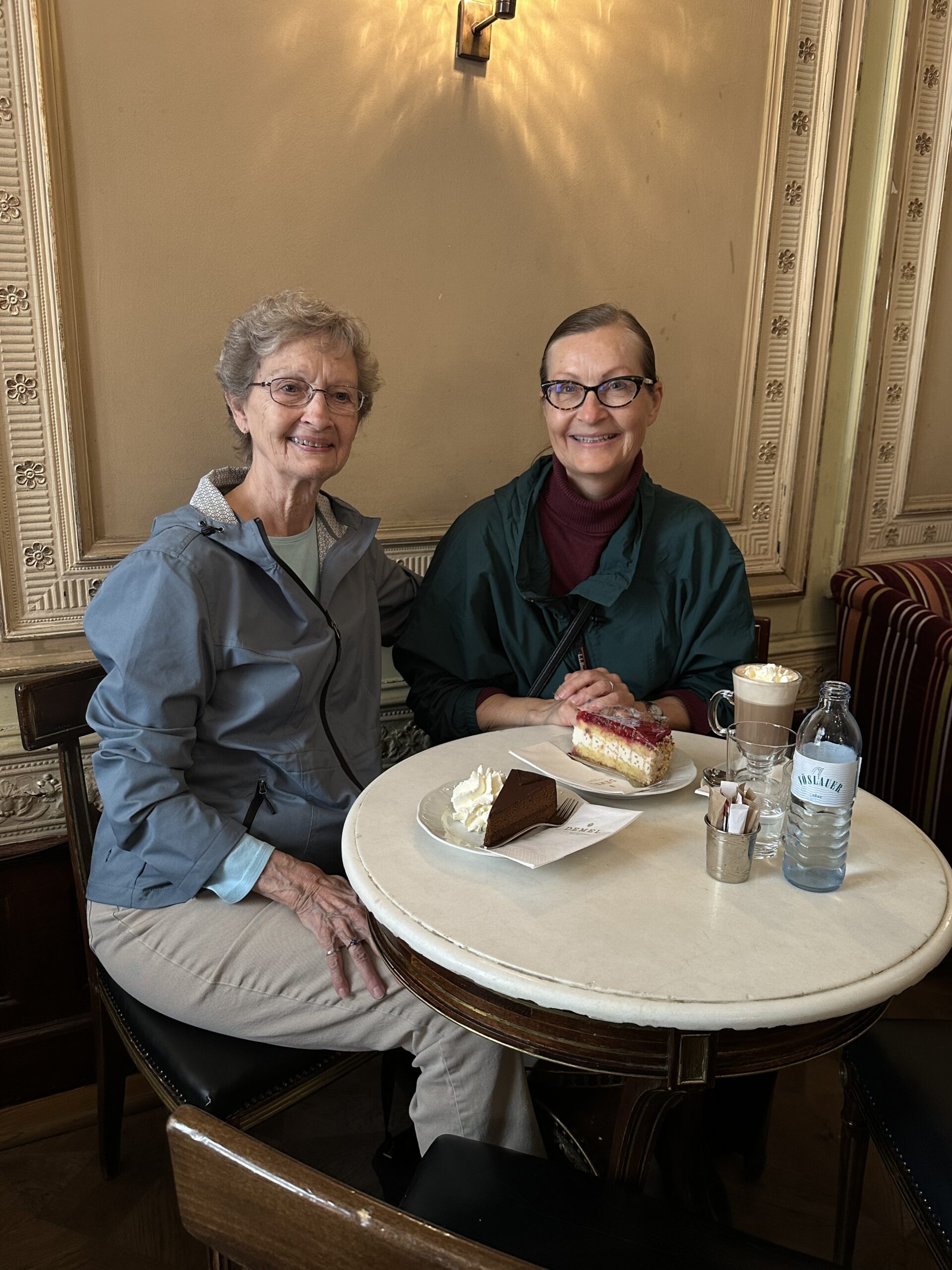
Fortified and caffeinated, we were ready to head over to the Kaiserliche Schatzkammer Wien or Imperial Treasury at the Hofburg Palace. The Treasury houses secular and ecclesiastical treasures covering over a thousand years of European history. Don’t miss the Austrian Imperial Crown, the Agate Bowl relic and the largest cut Emerald in the world. Plan on spending one-two hours. It has an accessible entrance, elevators and restrooms, loaner wheelchairs available (request early).
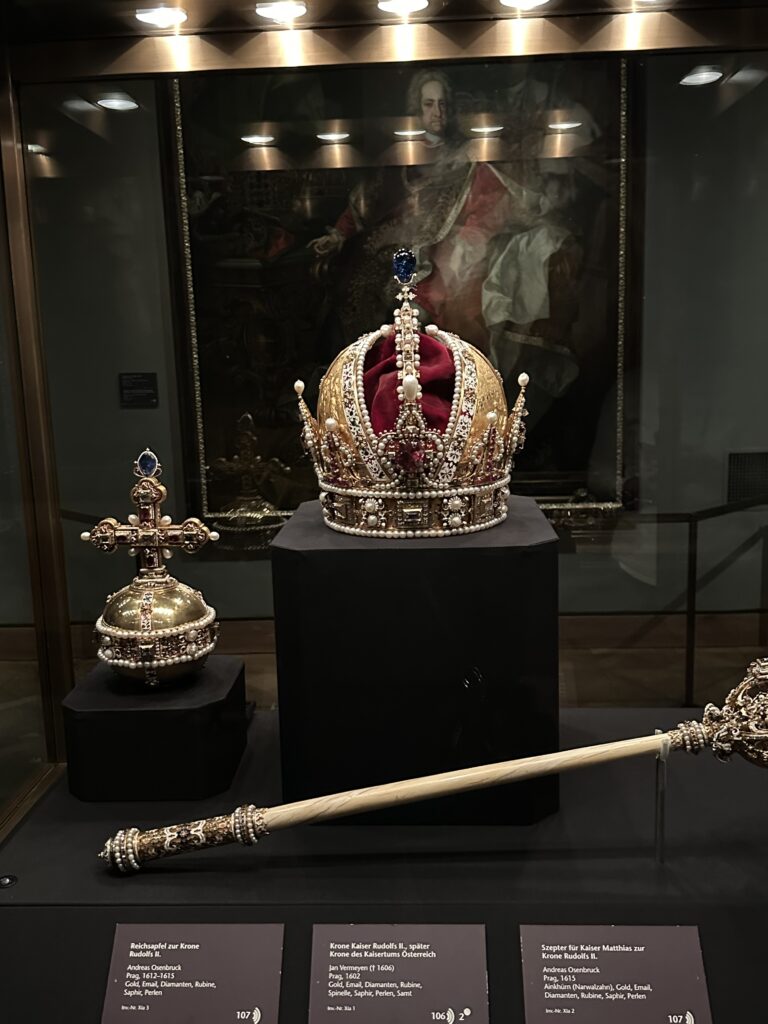
Just off the plane today, we opted for a light wine and cheese/bread dinner and got some much-needed rest, which we will need to continue our power-touring tomorrow!
Day two began with a walking tour of the Ringstrasse, the large circular boulevard inside of which are most of Vienna’s star attractions. We usually do this on the first day we land to get our bearings, but the second day works just as well.
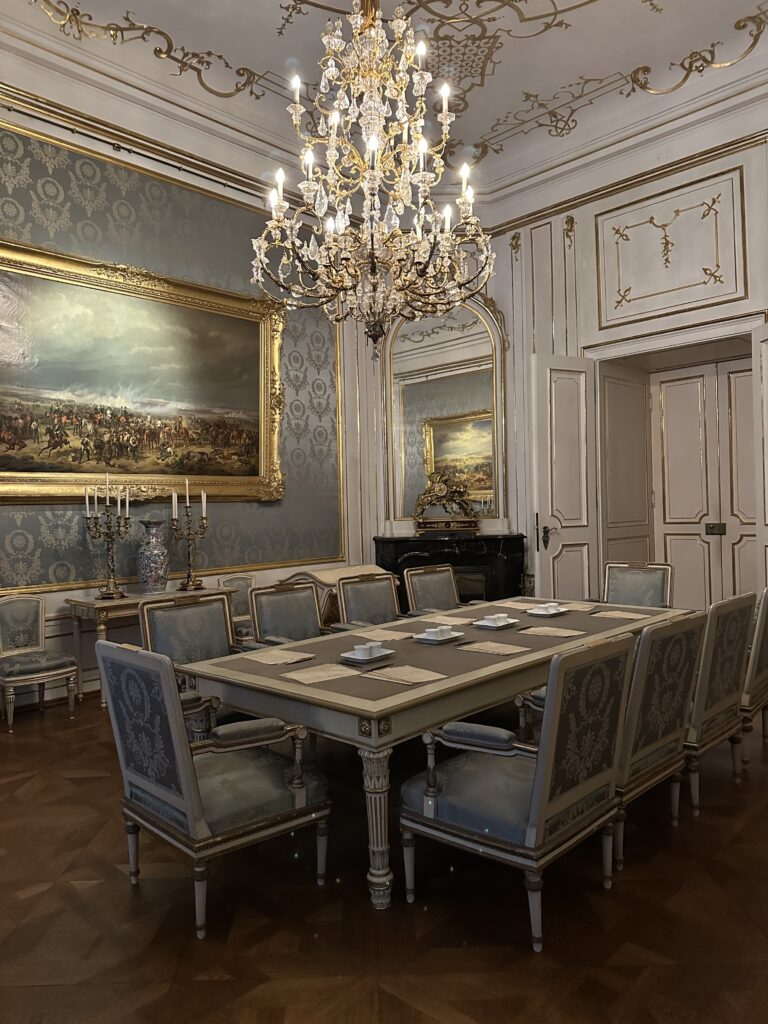
Following our orientation tour, we headed for the Hofburg and the Sisi Museum and Imperial Apartments. The Sisi Museum houses several items belonging to the Empress Elisabeth including her clothing and personal items. It takes about an hour to an hour and a half to walk through, leaving plenty of time for the Imperial Apartments, home to Sisi and to Emperor Franz Josef and featuring original furniture and the opulent rooms of the Habsburg dynasty. The apartments take about another hour and a half. The two areas have accessible entrances, ramps, elevators and restrooms. Do get the audio tour for the Sisi Museum, the tour is set up around the audio tour and is not particularly well marked for those who choose not to participate.
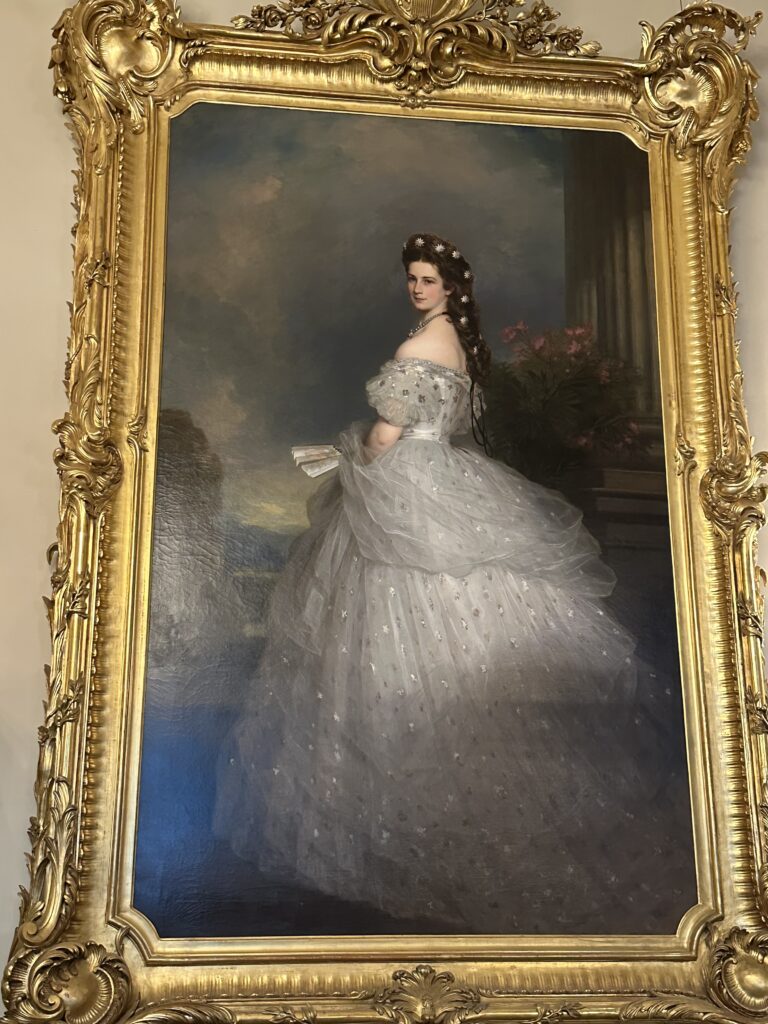
The Sisi story is a romantic and tragic one. She married Franz Josef when she was only 16 when he had originally intended to propose to her older sister. She struggled with court life but remained on good terms with the emperor. She was assassinated at the age of 60.
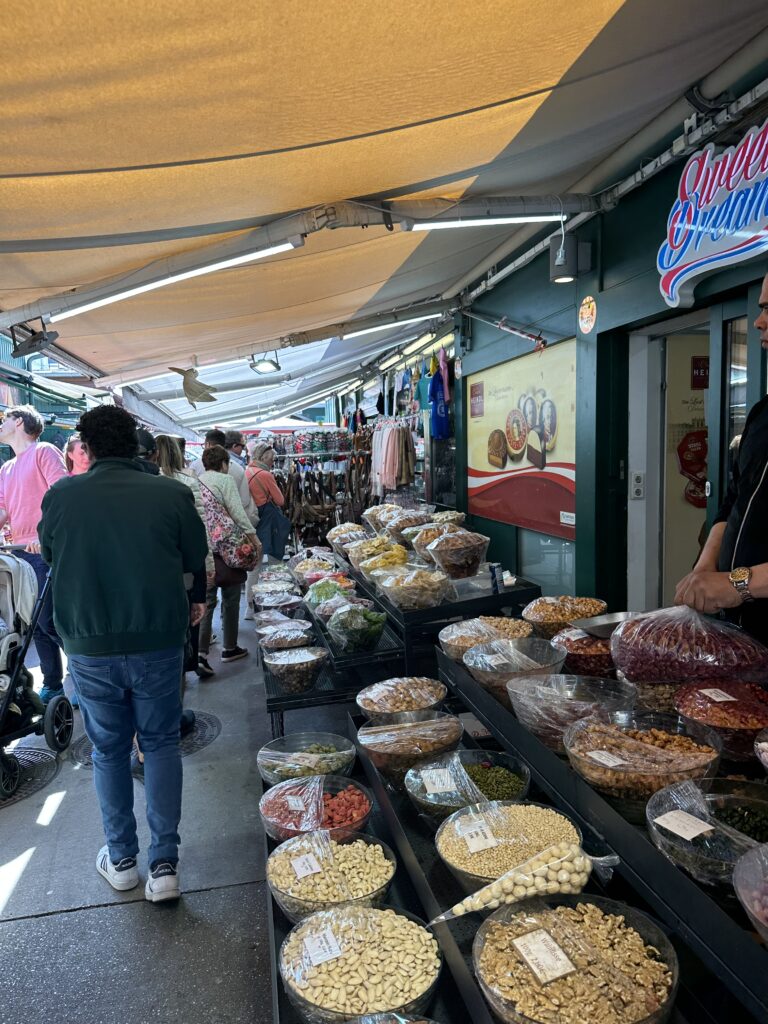
Fortunately, we still had quite enough time to attend the Saturday Naschmarkt flea market! The Naschmarkt has plenty of dining options, fresh produce and farm fresh items. On Saturdays there is also a flea market featuring vintage clothing and antiques. One of our favorite ways to spend a few hours! Bring cash and prepare to bargain. You may want to bring your translator app and at least be sure to say “Bitte” (please) and “Danke” (thank you). By the time we were able to get to the Nashmarket around 2pm, most of the flea market was packing up, so reminder to get there early in the day. However, spending an hour or two in the afternoon at one of the lovely outdoor eateries is pretty good entertainment.
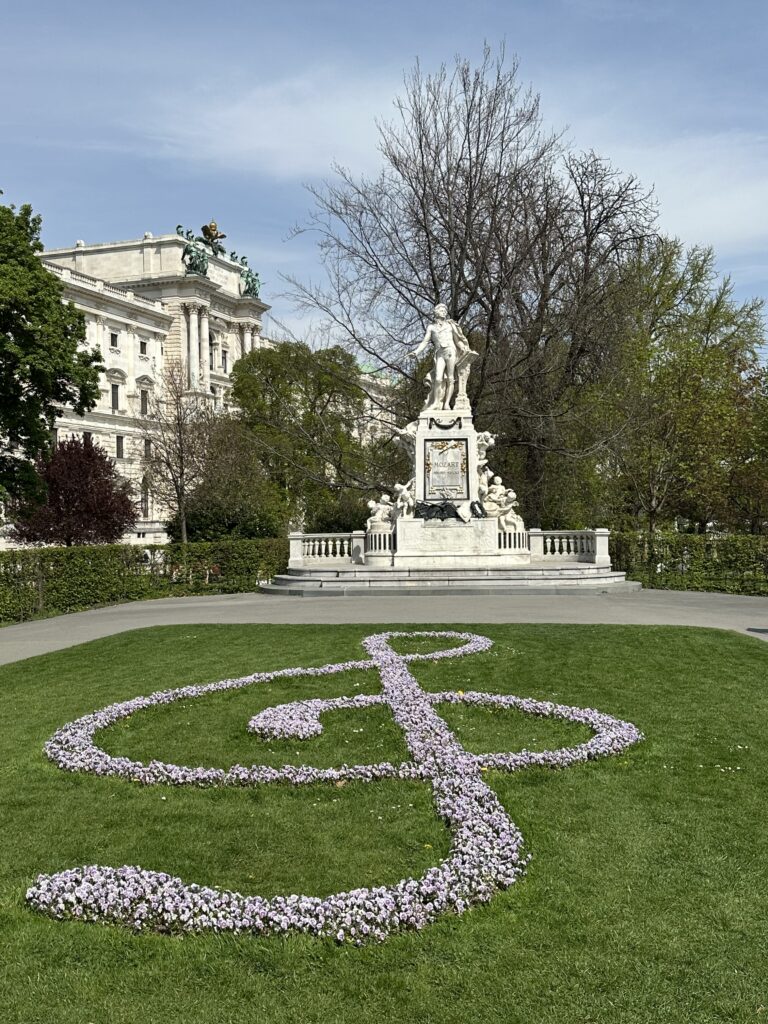
Since we were in the City of Music, it is only fitting to attend a Mozart and Strauss Concert in the evening. A very enjoyable way to round out the day! It is pretty easy to find a concert to attend as most all have booths in the touristed areas. The one we attended had opera singing, dancing and a quartet. It was nicely done and also featured a glass of wine at intermission. It is worth it to hear the music that made area famous. It takes you back to a time of royal courts and struggling artists.
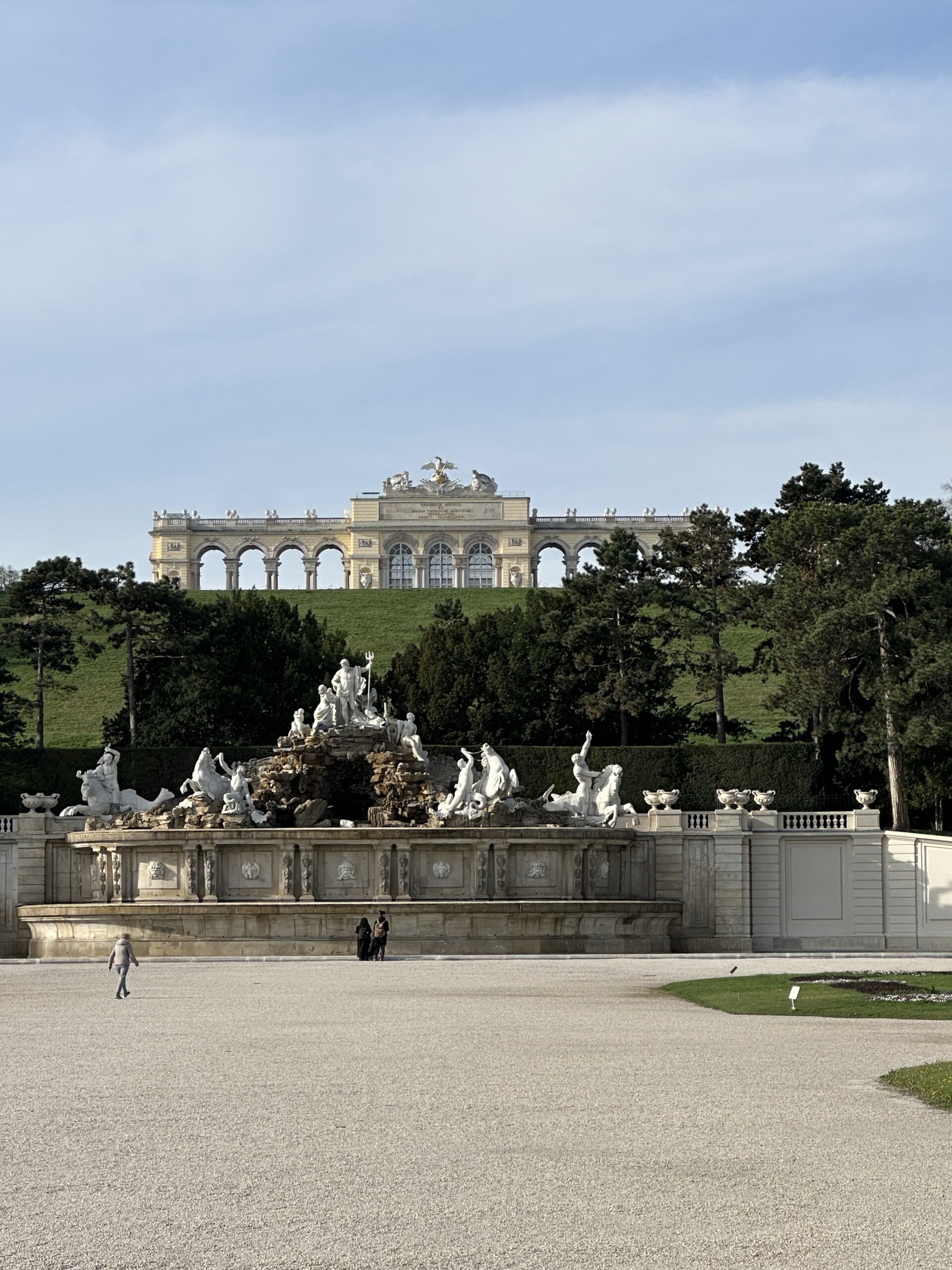
For our third day in Vienna, we decided to dial it back a bit and go out to Schonbrunn Palace. Sundays there is a Jazz Brunch at the Gloriette at the far end of the gardens and we had made reservations (a month out) to attend. The brunch was pretty nice, but to be honest, the brunch at our hotel was just as good. The main attraction is the beauty and ancient grace of the building, the Gloriette. We were expecting a wonderful view, but it was only available from the bar tables along the perimeter. Also, the advertised “jazz” was actually two violinists playing classical music. It was nice, but I was expecting something a little more swish.
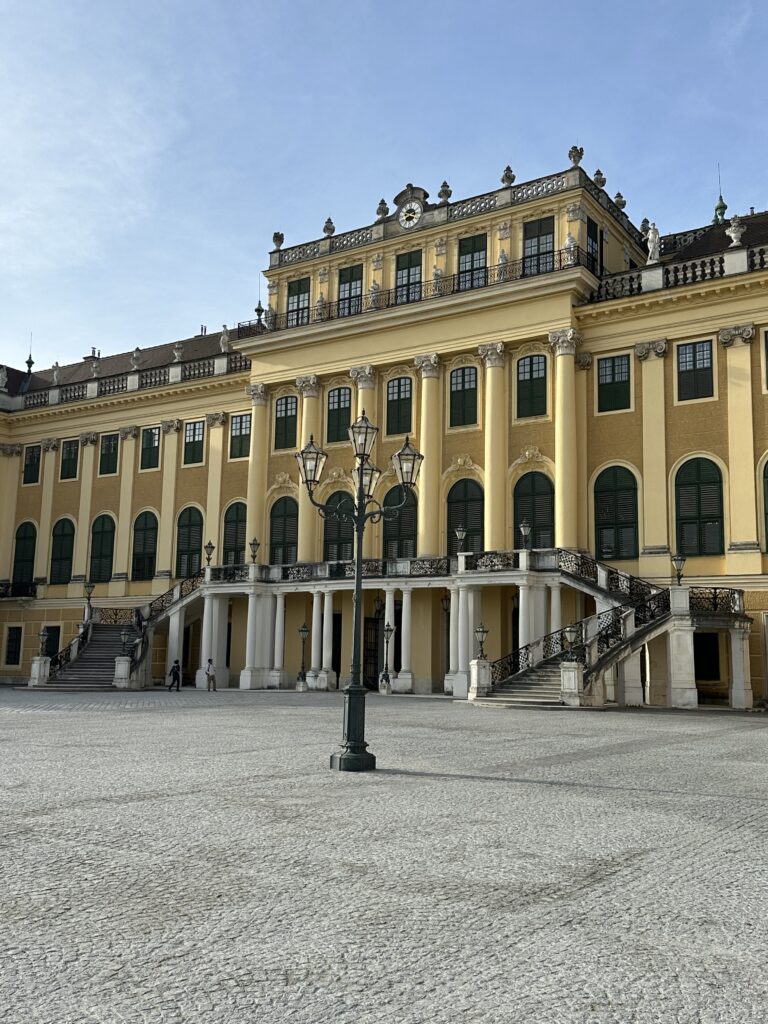
Schonbrunn was the summer palace of Habsburg royalty and is a UNESCO World Heritage Site. Of the 1441 rooms in the Palace, 45 can be visited. Don’t miss the Empress Sisi’s rooms, the Blue Staircase, the Audience Chamber, the Yellow Room, and the Hall of Mirrors.
We took an uber out to the grounds, but it is easy enough to get to by U Bahn subway system. The Palace and the gardens are accessible with accessible ramps and restrooms, with wheelchair rentals on site.

Also reserve some time to visit the exceptional grounds of the Palace featuring 400 acres of manicured gardens. Don’t miss the Neptune Fountain, the Orangery and the Gloriette at the far end for a lovely view back at the Palace. Some of the attractions are by extra fee, but many free ones are available. The pathways are mostly pebbled and level, but it is an uphill climb to the Gloriette.
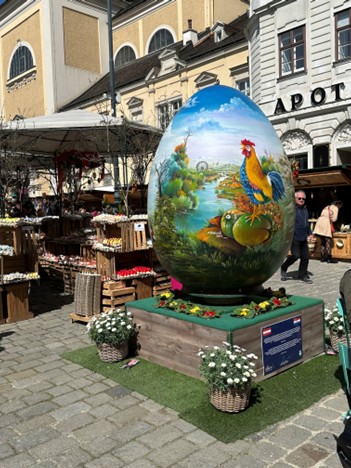
As it was Easter time in Vienna, there was also a pretty large Easter market at Schonbrunn. Actually, there were several nice Easter markets in Vienna. Most featured hand-painted eggs (not cheap) and lots of food and drinks. It was fun to walk through the markets and made for a lovely way to spend the day!
And just to make sure we were completely exhausted on our three-day power tour of Vienna, we stopped by the Peterskirche and the Karlskirche!
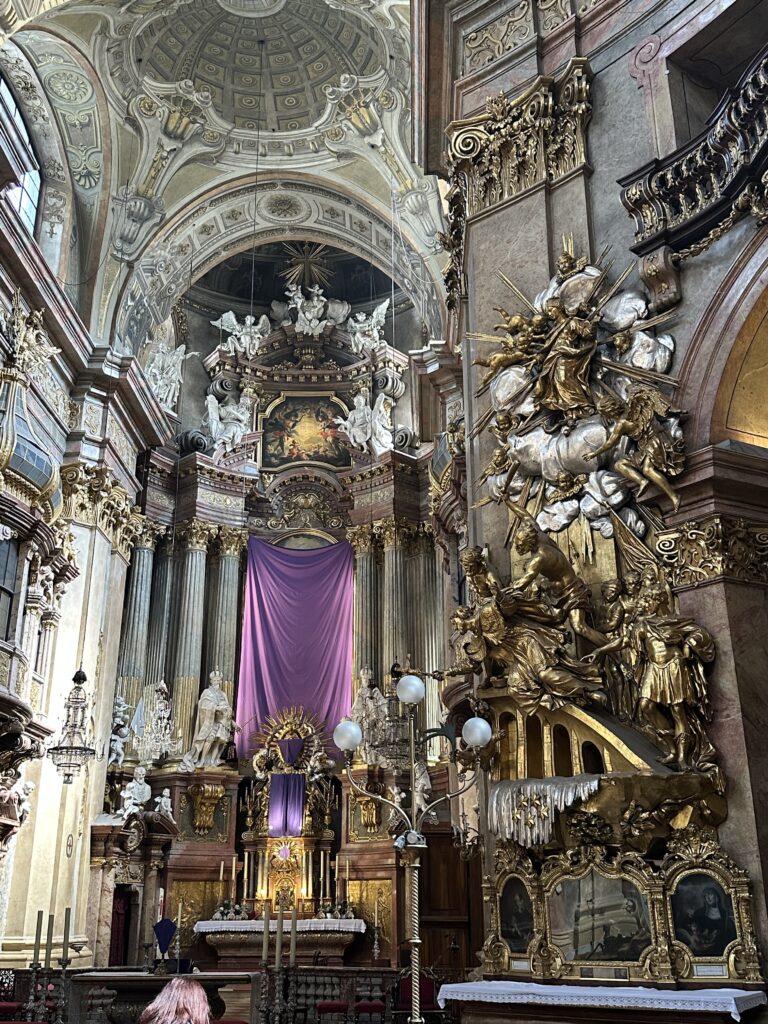
Peterskirche is a Baroque masterpiece built 1701-1733 and one of the first domed churches in Vienna. Interestingly, there had been a church structure in the same area since the Middle Ages. The lavish interiors are definitely worth a look.
Karlskirche is another Baroque architectural and interior marvel, dedicated to St. Karl Borromäus, namesake of Habsburg emperor Charles VI, who vowed to build it following a plague.
Three days is really not enough time to see the main sights in Vienna. The city is truly on par with other European capitals such as Paris, London and Berlin culturally and historically. I would recommend at least four days and even then, an additional day trip to Salzburg should be on your list. But…we have a cruise waiting for us! So Auf Weidersehn…..at least until next time.
Where we stayed: Grand Hotel Wien, breakfast included. Accessible entrances, parking and rooms.
How we got there: Arrived by plane from the US. This was part of a seventeen-day river cruise tour through Eastern Europe including Austria, Hungary, Croatia, Serbia, Bulgaria, Romania and a post-extension in Turkey.
General Accessibility Information: Austria is generally accessible. Larger cities will have accessibility at major hotels and sights. Some transport hubs and most sidewalks are accessible.A lot of the historical areas will have steps or cobbled walkways. Call in advance to verify and make specialty arrangements. See our sections on specialty apps and accessible travel for more on accessibility assistance. Accessible information on Vienna accessibility:

